Endocytosis of prion protein is required for ERK1/2 signaling induced by stress-inducible protein 1
- PMID: 18579743
- PMCID: PMC2739057
- DOI: 10.1523/JNEUROSCI.1701-08.2008
Endocytosis of prion protein is required for ERK1/2 signaling induced by stress-inducible protein 1
Abstract
The secreted cochaperone STI1 triggers activation of protein kinase A (PKA) and ERK1/2 signaling by interacting with the cellular prion (PrP(C)) at the cell surface, resulting in neuroprotection and increased neuritogenesis. Here, we investigated whether STI1 triggers PrP(C) trafficking and tested whether this process controls PrP(C)-dependent signaling. We found that STI1, but not a STI1 mutant unable to bind PrP(C), induced PrP(C) endocytosis. STI1-induced signaling did not occur in cells devoid of endogenous PrP(C); however, heterologous expression of PrP(C) reconstituted both PKA and ERK1/2 activation. In contrast, a PrP(C) mutant lacking endocytic activity was unable to promote ERK1/2 activation induced by STI1, whereas it reconstituted PKA activity in the same condition, suggesting a key role of endocytosis in the former process. The activation of ERK1/2 by STI1 was transient and appeared to depend on the interaction of the two proteins at the cell surface or shortly after internalization. Moreover, inhibition of dynamin activity by expression of a dominant-negative mutant caused the accumulation and colocalization of these proteins at the plasma membrane, suggesting that both proteins use a dynamin-dependent internalization pathway. These results show that PrP(C) endocytosis is a necessary step to modulate STI1-dependent ERK1/2 signaling involved in neuritogenesis.
Figures


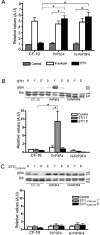
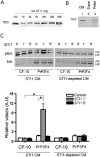

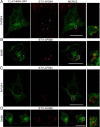
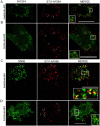
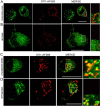
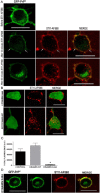
References
-
- Americo TA, Chiarini LB, Linden R. Signaling induced by hop/STI-1 depends on endocytosis. Biochem Biophys Res Commun. 2007;358:620–625. - PubMed
-
- Barbosa J, Jr, Ferreira LT, Martins-Silva C, Santos MS, Torres GE, Caron MG, Gomez MV, Ferguson SS, Prado MA, Prado VF. Trafficking of the vesicular acetylcholine transporter in SN56 cells: a dynamin-sensitive step and interaction with the AP-2 adaptor complex. J Neurochem. 2002;82:1221–1228. - PubMed
Publication types
MeSH terms
Substances
Grants and funding
LinkOut - more resources
Full Text Sources
Other Literature Sources
Research Materials
Miscellaneous
